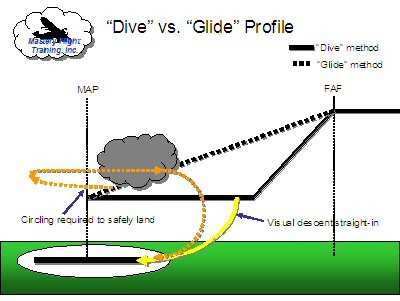Aero-Tips!
A good pilot is always learning -- how many times have you heard
this old standard throughout your flying career? There is no truer
statement in all of flying (well, with the possible exception of
"there are no old, bold pilots.") It's part of what makes aviation
so exciting for all of us... just when you think you've seen it
all, along comes a scenario you've never imagined.

Aero-News has called upon the expertise of Thomas P. Turner,
master CFI and all-around-good-guy, to bring our readers -- and us
-- daily tips to improve our skills as aviators, and as
representatives of the flying community. Some of them, you may have
heard before... but for each of us, there will also be something we
might never have considered before, or something that didn't
"stick" the way it should have the first time we memorized it for
the practical test.
It is our unabashed goal that "Aero-Tips" will help our readers
become better, safer pilots -- as well as introducing our
ground-bound readers to the concepts and principles that keep those
strange aluminum-and-composite contraptions in the air... and allow
them to soar magnificently through it.
Look for our daily Aero-Tips segments, coming each day to you
through the Aero-News Network. Suggestions for future Aero-Tips are
always welcome, as are additions or discussion of each day's tips.
Remember... when it comes to being good pilots, we're all in this
together.
Aero-Tips 02.04.06
There’s been a subtle yet dramatic change in philosophy
regarding descent to Minimum Descent Altitude (MDA) in
non-precision approaches. Most IFR pilots have been taught to
descend expeditiously to MDA, then fly level to the Missed Approach
Point (MAP) while looking for the runway. Call this the "dive and
drive" method.
In recent years there’s been a move to teach (and
evaluate) a shallow, constant descent from the Final Approach Fix
(FAF) or last step-down to MDA, similar to that associated with an
Instrument Landing System (ILS) glideslope. Let’s call this
the "glide" method.

Advantage of the Glide
The biggest advantage of the glide method is that it makes
descent below MDA less likely, because there is no duration at
which the flight is exposed to flight at this altitude—hit
MDA and either proceed visually or immediately miss the approach.
It allows for a "stabilized" approach. Modern GPSs can compute the
precise rate of descent to arrive at MDA at the MAP given actual
wind conditions (although they cannot predict changes in winds
during descent).
Advantage of Dive and Drive
By getting the airplane to MDA sooner, hopefully below the bases
of clouds, the dive and drive method permits visual acquisition of
the runway sooner, with a greater chance of landing success when
the field is at minimums.
Disadvantages
Biggest disadvantage of the glide method is that it puts the
airplane at 500 feet AGL or higher at the MAP…often over the
runway threshold, midfield or even at the far end of the runway. A
"glide method" approach to near minimums may require circling to
safely land—meaning in practice minimums may be higher in a
glide method approach than a traditional "dive and drive"
approach.

Sure, there’s a bigger chance the undisciplined pilot will
"bust minimums" in the dive and drive method, but with practice and
attention this can easily be avoided.
Aero-tip of the day: Recognize the advantages
and disadvantages of opposing philosophies toward non-precision
approach descents—and choose the method that best fits
conditions.
 SpaceX to Launch Inversion RAY Reentry Vehicle in Fall
SpaceX to Launch Inversion RAY Reentry Vehicle in Fall Aero-News: Quote of the Day (04.23.24)
Aero-News: Quote of the Day (04.23.24) Aero-News: Quote of the Day (04.20.24)
Aero-News: Quote of the Day (04.20.24) ANN's Daily Aero-Linx (04.20.24)
ANN's Daily Aero-Linx (04.20.24) Aero-News: Quote of the Day (04.21.24)
Aero-News: Quote of the Day (04.21.24)





